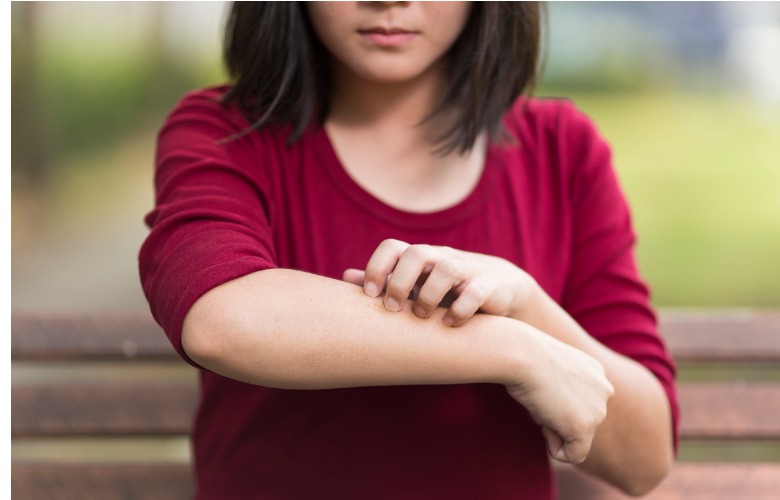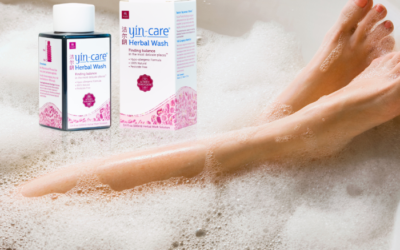TCM for Skin Conditions
Prevention and Treatment
There isn’t a cure for eczema, psoriasis, or rosacea however self-care measures can help prevent sudden eruptions and relieve symptoms such as; avoiding harsh soaps, cosmetics and detergents, identifying foods that can trigger allergies and avoiding or reducing alcohol intake. Because stress can lower our immune system and increase inflammation, it is especially important to implement stress reducing techniques in our daily lives.
Western medications to treat eczema, psoriasis, acne and shingles, can include topical steroids and analgesics, anti-itch creams, antihistamines, antibacterial, antivirals, immunosuppressants and many more. While these standard therapies may lessen the symptoms, patients continue to have flare ups with undesirable side effects and some are associated with increased risk for infections. Increasingly, patients are leaning more towards Traditional Chinese Medicine in hopes of relieving their symptoms and minimizing their side effects.
How TCM relates to Skin Diseases
One of the TCM pattern differentiations or syndromes, is that external (climatic) pathogenic factors, called ‘Xie Qi’ can invade and disrupt our body in various forms such as: Wind, Cold, Dampness, Heat, Dryness and Fire. In TCM, the main pathogenic factors of eczema, psoriasis, acne, rashes, and shingles are viewed as Wind, Dampness and Heat. One analogy for example, is that in Western medicine acute respiratory diseases are due to invasion of the body by bacteria or viruses. Ancient Chinese medicine did not have a knowledge of the existence of bacteria and viruses and acute respiratory infections were considered to be an invasion of ‘Wind’ or other climatic pathogenic factors.
Interestingly, in TCM the lungs and the skin have a unique connection in that the lungs help moisten the skin such as our sweat, and regulates the opening and closing of our pores, which helps provide a normal resistance to pathogens. (I will go further into detail on this in a blog next on Wei Qi in TCM). External pathogenic factors can become internal (usually changing their nature in the process). So, if a patient has been exposed to a climatic factor of wind, damp or heat, (depending upon their constitution), this pathogenic invasion can actually penetrate to the surface of the skin, in the form of ‘damp-heat rashes’. Chronic dampness in the skin is the cause of many skin diseases, chiefly eczema (atopic dermatitis). Dampness in the skin manifests as greasy sweat, macules, papules, vesicles, oozing skin lesions, and inflammation. Atopic dermatitis (AD) is a chronically relapsing inflammatory skin disease commonly associated with allergy.
Success with TCM
One study for the treatment of patients with atopic dermatitis, evaluated the treatment combinations of receiving both acupuncture and Chinese medicine. Patients between the ages of 13 and 48 were given Chinese herbal medicine 3 times daily while also receiving acupuncture treatments twice a week for a total of 12 weeks with assessments completed prior to treatment and on weeks, 3, 6, 9 and 12. At the end of the treatment study, compared with the baseline, 100 % of patients had improved changes in Eczema Area and Severity Index (EASI), and 78 % had a reduction in the Dermatology Life Quality Index (DLQI) and assessment of itch measured on the visual analog scale (VAS). There were no observable adverse side effects. The conclusion of this study suggests combining treatments of both acupuncture and Chinese herbal medicine has beneficial effects for patients suffering from atopic dermatitis.
An excellent TCM herbal formula that can treat abscesses, sores, acne, boils, and acute episodes of eczema or hives is, Shi Wei Bai Du San. The English name: Ten-Ingredient Powder to Overcome Toxicity. It clears heat, dispels wind and transforms dampness from the skin. Another great TCM herbal formula that can expel wind-damp-heat from the skin and treat red rashes or red patches all over the body is Xiao Feng San, English name: Eliminate Wind Powder from the “True Lineage”. It is great for itching, oozing sores and even for treating poison oak.
Acupuncture works on the basis of eradicating wind, clearing heat, and transforming damp by regulating qi and moving the blood. In clinics, acupuncture points frequently used in the treatment for damp-heat rashes, with anti-inflammatory reducing effects include points such as LI 11 Qu Chi, SP 10 Xue Hai and BL 40 Wei Zhong. These points can cool pathogenic heat in the blood and eliminate wind from the skin, which can cause eruptions like eczema, urticaria (hives), and herpes zoster.
A systematic review and meta-analysis of randomized controlled trials, in 2016 evaluated the safety and efficacy of acupuncture and moxibustion for herpes zoster. Antiviral therapies for herpes zoster can be effective, but don’t meet the immediate pain relief that patients seek. In this study, outcomes for pain intensity on the VAS was lower for the group that received acupuncture plus moxibustion in comparison to the treatment group that received pharmacotherapy alone.
In addition to receiving acupuncture and Chinese herbal medicine treatments for inflammatory skin conditions, stress management techniques are equally as important. Ancient practices of TCM like Tai Chi and Qi Gong can be especially beneficial for not only reducing stress but for preventing inflammatory outbreaks. If you would like more information, please feel free to email me.
References:
Leung DY. Atopic dermatitis: the skin as a window into the pathogenesis of chronic allergic diseases. J Allergy Clin Immunol. 1995;96:302–318. doi: 10.1016/S0091-6749(95)70049-8. [PubMed] [CrossRef]
Leung AK, Hon KL, Robson WL. Atopic dermatitis. Adv Pediatr. 2007;54:241–273. doi: 10.1016/j.yapd.2007.03.013. [PubMed] [CrossRef]
Maciocia, G. (2015). The foundations of Chinese medicine: A comprehensive text. Edinburg: Elsevier.
Salameh, F., Perla, D., Solomon, M., Gamus, D., Barzilai, A., Greenberger, S., & Trau, H. (2008). The Effectiveness of Combined Chinese Herbal Medicine and Acupuncture in the Treatment of Atopic Dermatitis. The Journal of Alternative and Complementary Medicine,14(8), 1043-1048. doi:10.1089/acm.2008.0162

Sharron is a Doctor of Acupuncture and Chinese Medicine specializing in primary care health, Chinese Herbology, women’s health, male and female fertility and certified in facial rejuvenation. As a Doctor of Acupuncture and Chinese Medicine, her passion and goals are to help her patients achieve and sustain their optimum health. Sharron is excited to be joining Acupuncture Atlanta in December 2018 as a licensed Acupuncturist. She lives in Atlanta, Georgia with her two cats, Saki and Suki, and loves cooking healthy, gourmet meals in her spare time. Sharron can be contacted via email sharron@acuatlanta.net



